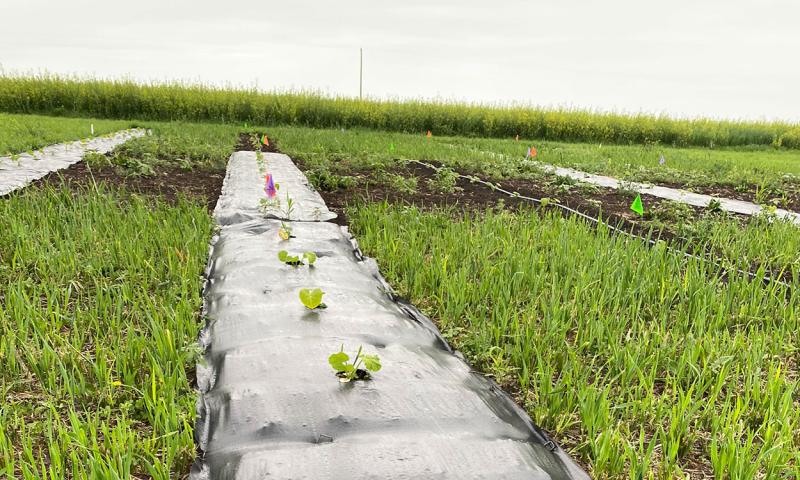
Written by Alexis Barnes, Department of Agronomy, Horticulture and Plant Science Graduate Research Assistant, under the direction and review of Kristine Lang and Rhoda Burrows, former Professor & SDSU Extension Horticulture Specialist.
Weeds continue to be a concern for farmers and gardeners in South Dakota which requires the use of heavy tillage, ground covers or hand pulling weeds. Plastic mulches are a common ground cover used by vegetable farmers or market gardeners because they block out sunlight and smother pesky weeds. Plastic mulch, however, can be wasteful, and a new plastic layer must be applied every year. A durable alternative to plastic mulch is landscape fabric, which is permeable, may last longer than single-use plastic mulch depending on use, and is easy to install prior to planting flowers or vegetables. Farmers and market gardeners have taken an interest in landscape fabric due to the durability, weed suppression and the ability to reuse the material.
Purchasing Materials
- Landscape fabric can be purchased from local garden centers, local landscapers or commercial landscaping companies, or even local conservation districts, depending on the amount needed.
- Propane torches for burning fabric can be purchased at local hardware stores in many shapes and sizes.
- Sod or landscape staples can be purchased from a commercial landscaping company or a local garden center or hardware store.
Preparing Fabric
One of the neat things about landscape fabric is that it is easy to create planting openings by burning holes into the fabric (Figure 1).
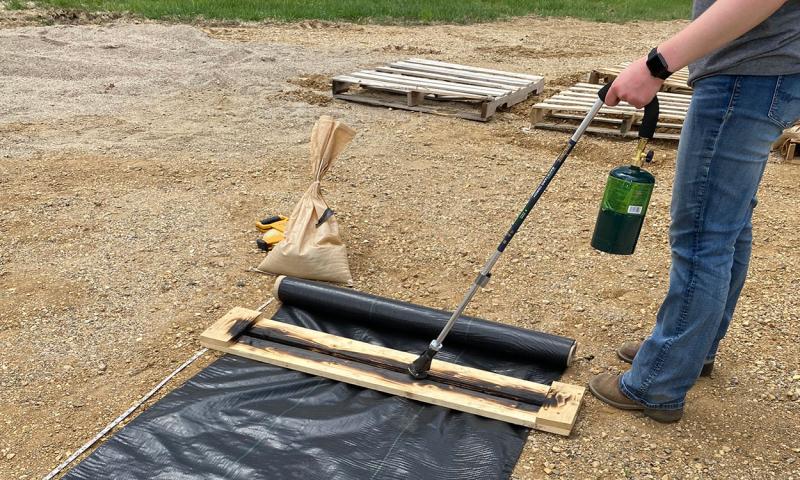
Burning the fabric cauterizes the edges of the material and prevents fraying. Landscape fabric can be burned prior to planting, or burned when fabric is placed in the field. Many different tools can be used for burning holes into fabric, including blow torches, propane canisters with a trigger switch, or a mulch burner with a mounting base.
Template Patterns
If perfectly-spaced planting holes for cash crops are desired, a template will be necessary to make this process easier. Wooden templates are easy to make at home with a drill bit and measured spacing on the template to create the holes (Table 1, Figures 2 through 4). Holes that are two-to-three inches in diameter will keep weeds to a minimum but allow for ease of planting into the soil below the fabric. Fabric holes can be pre-burned prior to installation or burned in the field prior to planting.
| Crop | Template Pattern |
|---|---|
| Marigolds, Nasturtium, Snapdragons, Zinnias (Figure 2) | 9 by 9-inch grid |
| Cucumbers | 1-foot single row |
| Melons and Tomatoes | 2-foot single row |
| Summer and Winter Squash (Figure 4) | 3-foot single row |
| Bell Peppers , Broccoli, Cabbage, Kale and Lettuce (Figure 3) | 12 by 18-inch staggered, double-row |
| Sunflowers (branching) | 18 by 18-inch staggered, double-row |
Zinnias and Snapdragons
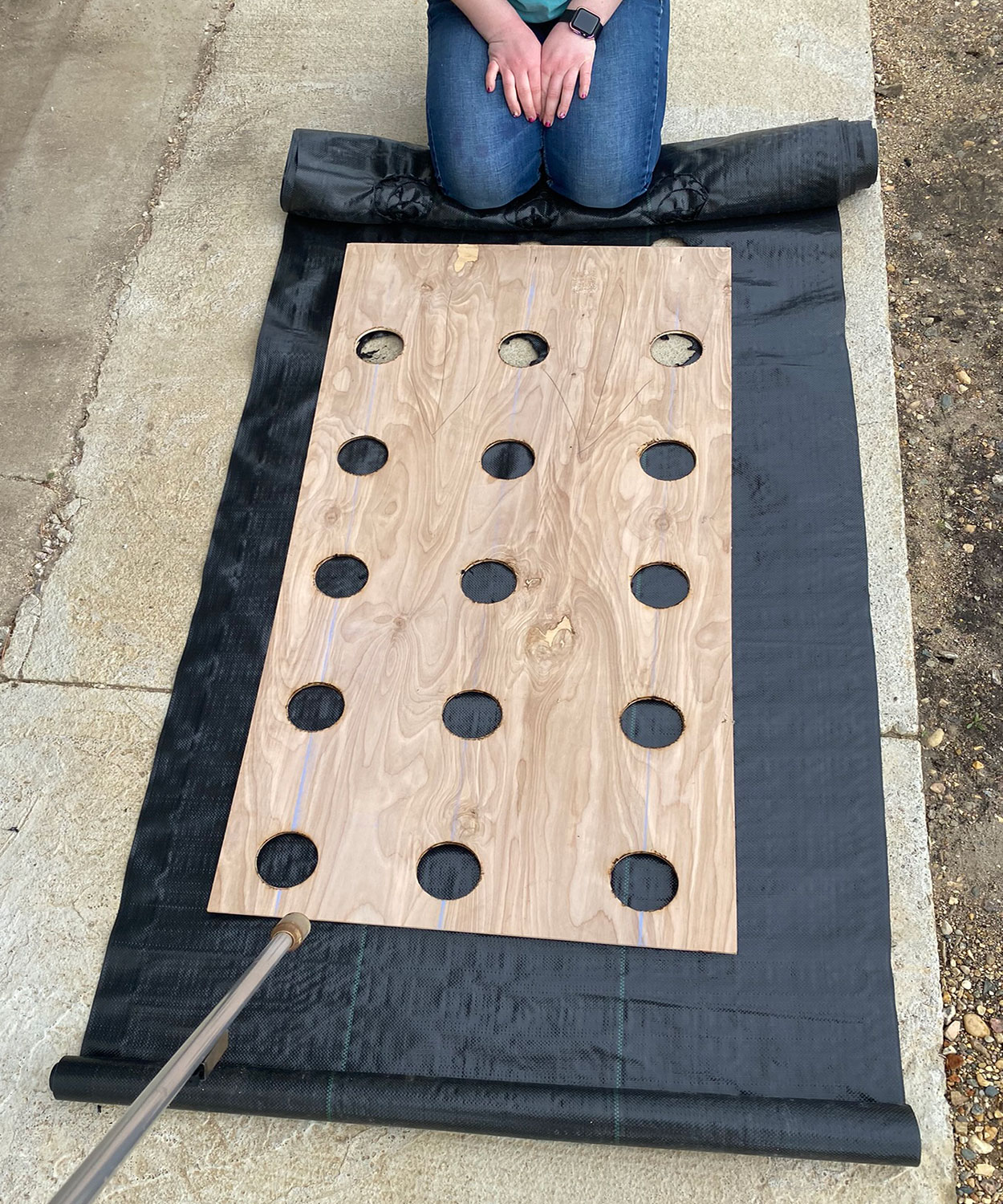
Broccoli, Lettuce, and Peppers
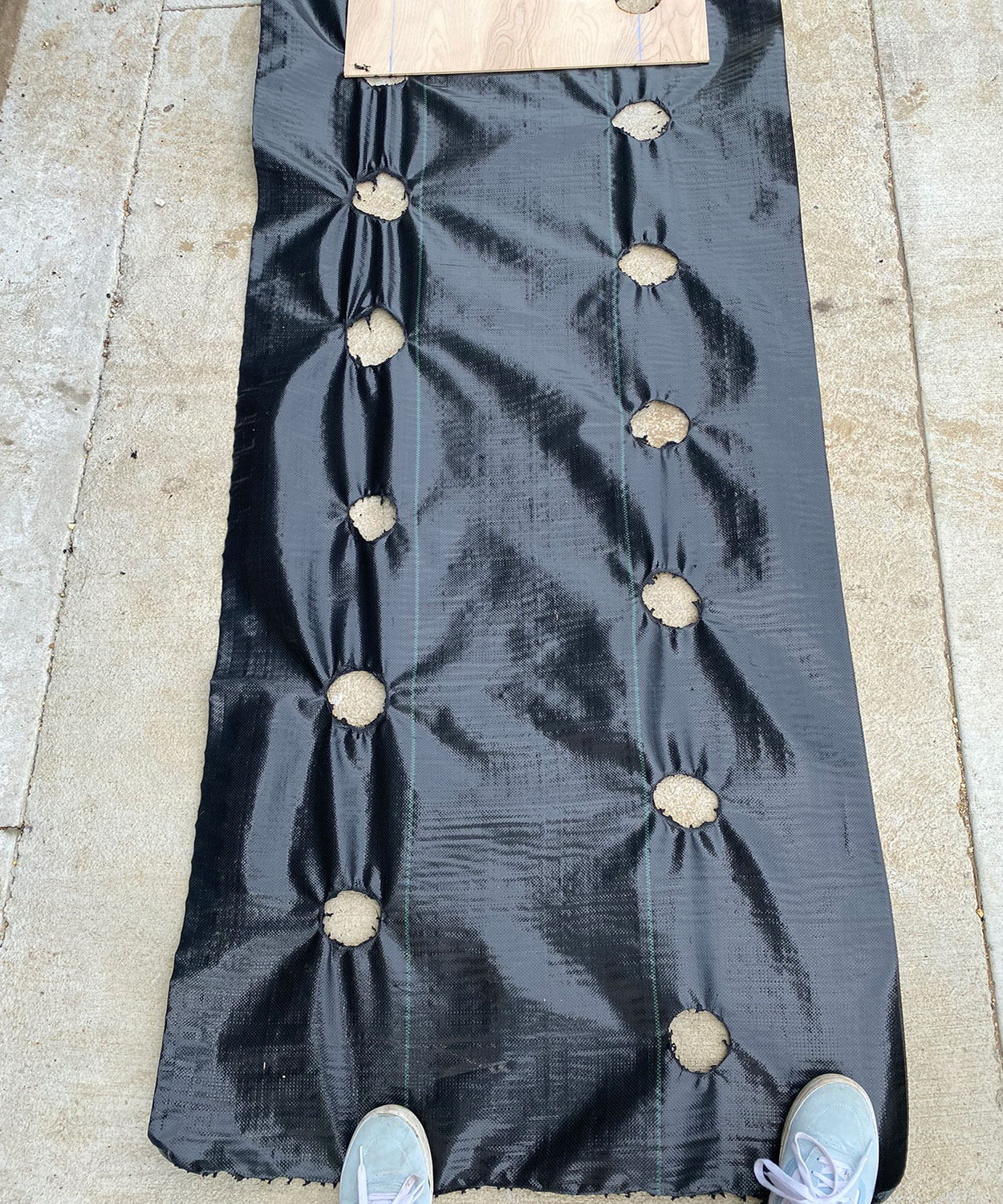
Summer and Winter Squash
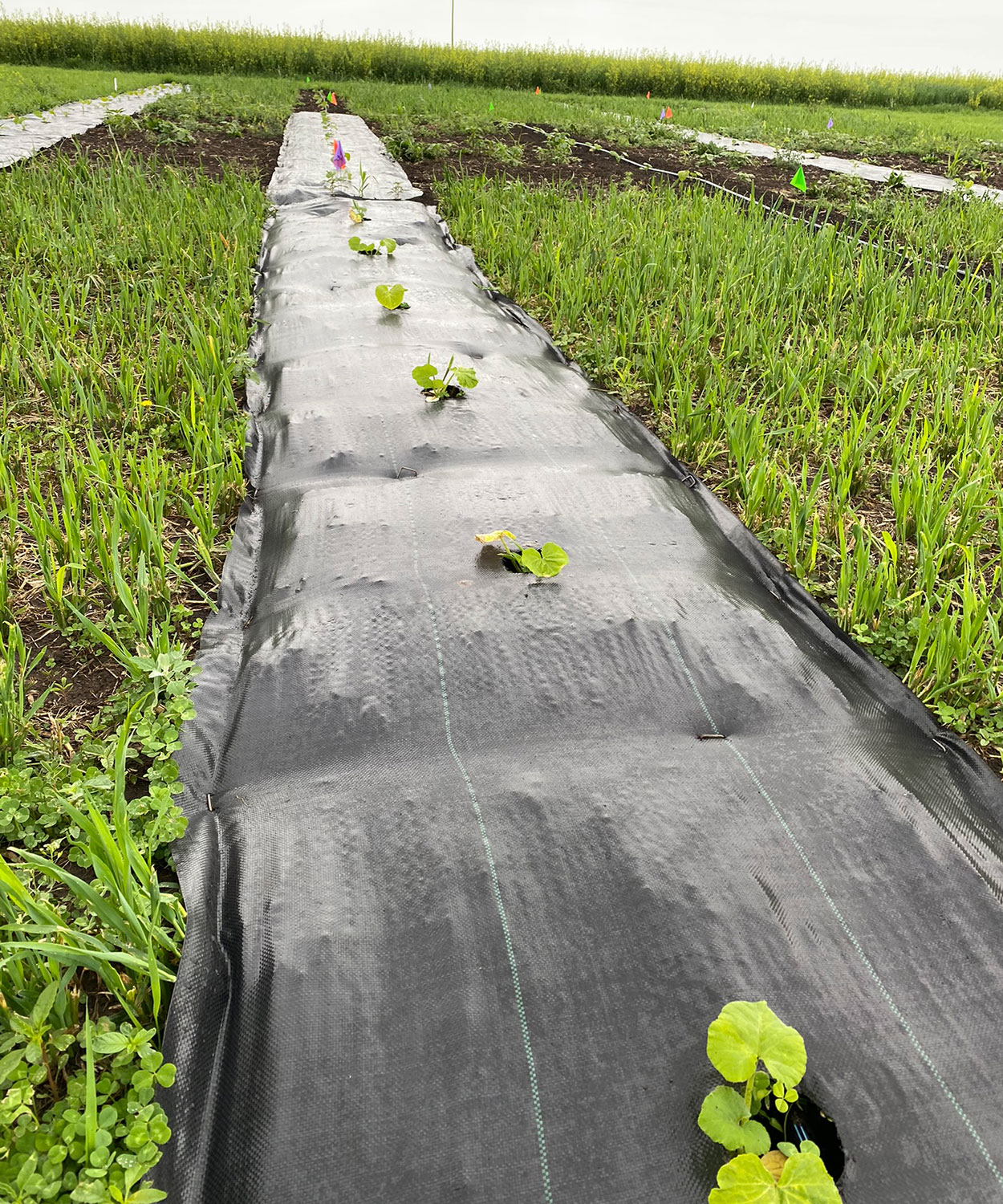
These suggestions are based on common plant spacing recommendations and experiences at SDSU.
Installing Landscape Fabric
Before installing the landscape fabric into the field, soil amendments should be selected and applied. Farmers or gardeners will typically spread a pre-plant application of compost or other commercial fertilizer blend and lightly till the beds to incorporate the fertilizer. Drip tape can be installed underneath the landscape fabric for seamless watering and use of a fertilizer injector, or a soaker hose can be applied directly to planting holes during or after planting. If installing drip tape, pre-burning landscape fabric holes will be the best option to prevent drip tape damage.
Fabric can be secured to the soil surface using metal sod or landscape staples that are at least six inches long. Fabric should be unrolled and pulled tight on either end to ensure that wind is not caught underneath the fabric before installing the staples. Landscape staples should be placed every two to three feet to provide security in strong wind events. Applying a few staples in the middle helps for extra wind protection and reduces the chances of the fabric “bubbling up” in the field.
After these steps are done, cash crops can be planted directly into the holes. Weed pressure will be greatly decreased, although it is a good idea to weed the planting holes once or twice during the growing season. Note that black landscape fabric can get hot mid-summer and may contribute to bolting or flowering of cool-season crops. Cool-season crops, such as lettuce, or cabbage, will have better growing conditions as a spring planting if landscape fabric is used.
Removal and Storage
At the end of the growing season, fabric can be removed and reused for the following year of planting if fabric remains intact. Fabric should be cleaned of any field debris and rolled up and stored in a clean, unused trash can for safe keeping. A large trash can with a lid works great to keep rodents from nesting in the fabric over the winter. Labeling fabric pieces or trash cans based on the length of the fabric and the spacing of the holes is helpful for planning the following year.
In Summary
Burning and installing landscape fabric may seem like a labor-intensive process, but it can help suppress weeds and maintain the health and vigor of the flower and vegetable crops. It can also save labor time from weeding throughout the growing season and the materials can be re-used for following growing seasons. Would you use landscape fabric in your farm or garden?
References
- Tarrant, Alyssa R., Daniel C. Brainard, and Zachary D. Hayden. Cover Crop Performance between Plastic-Mulched Beds: Impacts on Weeds and Soil Resources. HortScience 55, no. 7 (July 2020): 1069–77.
- Warren, Nicholas D., Richard G. Smith, and Rebecca G. Sideman. Effects of Living Mulch and Fertilizer on the Performance of Broccoli in Plasticulture. HortScience 50, no. 2 (February 2015): 218–24.


